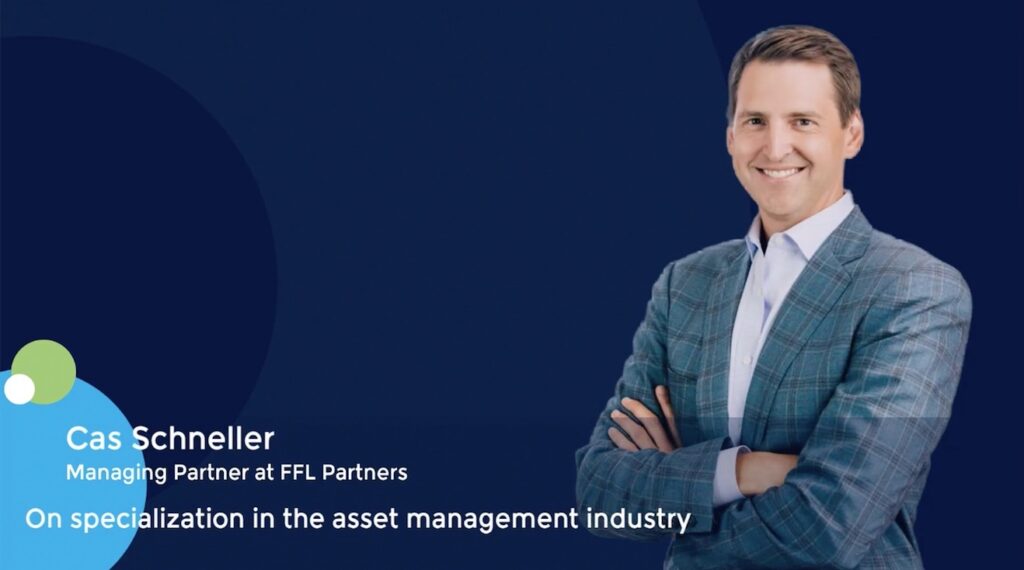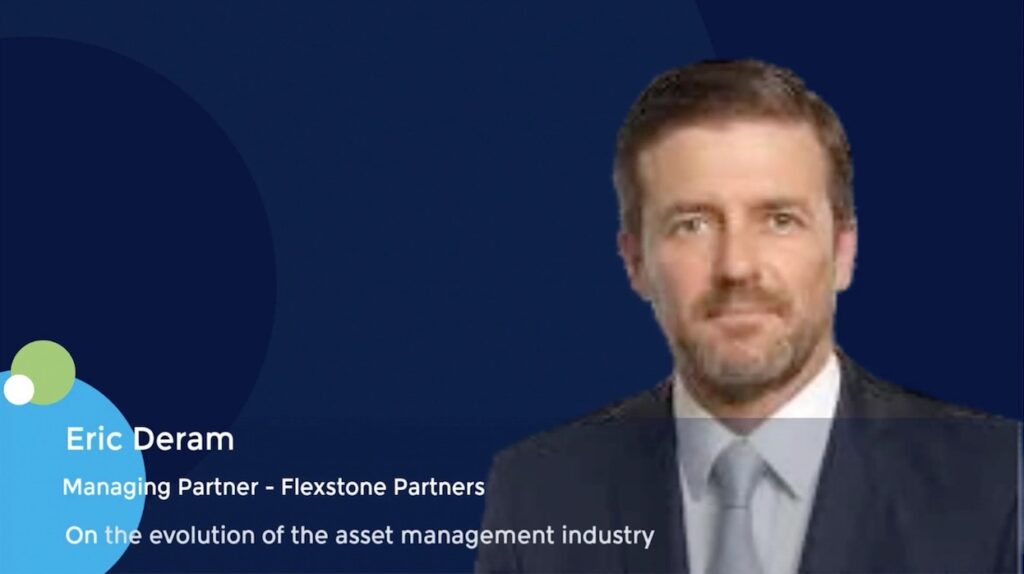Fund formation: Law firms pursue new mandates amid Asia fundraising slowdown
- Investment funds practices once reliant on China seek business in Japan and beyond
- Price cuts are not always enough to displace existing counsel in the ‘sticky’ funds industry
- Lawyers see more traction in secondaries, fund-of-one structures, LPs behaving like GPs
Simpson Thacher dialled up its efforts to secure Japan fund formation work in 2014 as private equity began to benefit from the tailwinds of Abenomics. Adam Furber, head of the firm’s Asia investment funds practice, increased the frequency of his visits to the country, working with local colleagues to call on every local private equity firm that would take a meeting.
This was a deliberate move against the grain. Simpson was among the first to deploy funds lawyers in Asia three decades ago, but as the industry experienced exponential growth from around 2010, with China as its heartbeat, the firm found that everyone was targeting the same GPs and competing aggressively on price. Japan was seen as a market with different characteristics.
“Having a team of dedicated fund formation specialists in Tokyo who are fluent in Japanese has been a key ingredient to our success. Most importantly, we have found that Japanese sponsors, much like our largest clients globally, demand value add, strategic advice not only on individual fundraises but on all aspects of their businesses,” said Furber, adding that the firm is active across multiple asset classes.
Simpson counts a fair number of middle-market Japanese GPs as clients at a time when fundraising is reaching record levels. Twice as much money was raised for Japan last year compared to 2014. The buyout fund share grew more than 3x, yet the 2023 total was covered in the first six months of this year.
For the first time, Japan is expected to account for more than half of the firm’s Asia investment funds revenue. In-country headcount has grown from two to seven since the start of the year, taking the region-wide total to 23. Simpson is in the process of occupying a second floor of its Tokyo office building.
This activity has attracted the competition – and the price war – as funds counsel look for new clients, often to compensate for a drop-off in China activity. In this sense, Japan and Simpson are both outliers. The outlook for fundraising across Asia remains bleak and the past 18 months have seen law firms call on staff to justify their salaries, resulting in a paring rather than a bolstering of the ranks.
Cuts were not limited to investment funds practices, with one legal industry recruiter calling the shift from post-pandemic boom to fourth quarter of 2022 bust unprecedented. Previously, recruitment shocks in Hong Kong tended to be localised and temporary. This one was global and protracted.
“It didn’t matter if certain practices were busy enough that ordinarily they would have sufficient work to go to management and get headcount approval,” the recruiter said. “Law firms were letting go dozens of lawyers at a time across equity capital markets, debt capital markets, structured finance, derivatives, finance, and funds. The entire market has been impacted and every single law firm has struggled.”
Law firms have not been impacted equally. Kirkland & Ellis is the most frequently cited example of downsizing – its Asian investment funds practice, once nearly 30-strong, is now about half that size – but the firm’s business model is described as different to others. The recruiter compares it to an accordion: when the market booms, they grow; when it slows, they let people go.
Kirkland accumulated a huge number of GP clients by Asian standards, with 10-15 in Australia alone. At the other end of the spectrum, Cleary Gottlieb has 11 lawyers on the ground in Asia, including one partner, serving 11 managers across the region.
“Everything bounced back so quickly after COVID, and everyone was recruiting. Maybe we overrecruited, but we didn’t know what was around the corner,” a source close to Kirkland observed. “Now, we are recruiting again, which is the right thing to do.”
Kirkland expects to be at 20 lawyers by year-end. As such, it will still sit near the top of the clutch of law firms that represent most of the larger pan-regional and country managers in Asia. Other members of this group – Simpson, Cleary, Debevoise & Plimpton, and Gibson Dunn, though assessments vary – have teams of around a dozen to the mid-teens. Simpson has pushed past 20 because of its Japan expansion.
Attrition has also been limited in investment funds practices that are reasonably diversified – by geography, by asset class, and by the split between GP work and LP work. Some practitioners also emphasize the ability to provide a deeper level of service to private equity firms, whether that involves continuation funds, sales of GP stakes, and addressing internal issues like succession planning.
“What we’ve seen happening reflects individual strategy, not the broader market. Asia carries its share of concentration risk. The market is dynamic; you can have sharp upward movements followed quickly by corrections,” said Effie Vasilopoulos, head of the Asia investment funds group at Sidley Austin.
“Some firms have leaned into narrow segments, perhaps only private equity or certain types of China-based clients, and these are relatively subdued in the current environment. But the asset management industry is growing. It’s only a matter of time before the market here recovers and hiring and development continue on an upward trajectory.”
Regional reorientation
The size of the China-shaped hole varies by law firm, but it exists nonetheless. Between 2013 and 2022, China absorbed 30% of all capital committed to Asia-based managers, excluding renminbi-denominated vehicles and funds below USD 100m – more than 2x the South Korea total, 3x more than India, and 4x more than Australia, Japan, or Southeast Asia. It surpassed the pan-regional funds as well.
In 2023, fundraising for this market segment fell to a six-year low and China’s share slipped to 22%. Sentiment has not improved since then, with the 2024 total on track to be even lower. Japan has risen to 32%, while the China contribution has dwindled to 12%.
Funds counsel serving global and pan-regional managers can generally rely on a steady stream of business from flagship funds, expansion strategies, and swelling co-investment pipelines. For those looking to replace China names that are delaying their return to market or may never raise US dollars again, the onus is on finding new mandates.
There are four courses of action: identify a high-quality spin-out from an existing manager; find a slot as second counsel when a private equity firm expands into credit or infrastructure; displace the incumbent counsel; or recruit investment funds talent that brings readymade relationships in a certain geography.
Japan is a popular target. Earlier this year, White & Case hired a Tokyo-based funds partner and several associates from Linklaters, while Kirkland took two Japanese clients from Simpson, Japan Growth Investment Alliance (JGIA) and Integral Corporation. Both GPs have closed funds in the past few months.
The source close to Kirkland noted that gains in Japan had come from spending a lot of time on the ground with local managers. “Maybe they have existing offshore counsel, but they want more attention, or a different personality fit, or they are concerned about service level or price. Others have relied mainly on onshore counsel, but they want to increase their offshore exposure,” the source said.
There are barriers to entry in Japan such as unfamiliarity with parallel structures, the tax system, and the local accounting system. Other markets are similar in this respect. Gregory Barclay a partner at Goodwin Procter, which has 20 active mandates in India, emphasized the need to understand alternative investment fund (AIF) structures and GIFT City regime that brings elements of offshore taxation onshore.
Yet industry participants who expressed wariness about venturing into new markets are not dissuaded by the local nuances – which can be learned – as much as their ability and track record to compete with law firms that have entrenched positions. Displacing an incumbent funds counsel is notoriously difficult.
“There is typically a high level of ‘stickiness’ between a GP and its fund formation counsel. The fund formation counsel would typically have deep knowledge and understanding of the GP’s fund documents, including the drafting and negotiation history behind various provisions. They would also typically be very familiar with how the GP operates,” said Chris Lee, a partner at Cleary.
“For a GP, such knowledge, understanding and familiarity are important resources for future fundraises, especially given that many of the LPs that commit to future funds will typically be re-ups.”
There are plenty of examples of stickiness, but Hahn & Company is arguably the most pronounced. The Korea-focused manager used Kirkland for its first fund, Weil for its second, and Gibson for its third and fourth, essentially following Albert Cho as he moved from firm to firm. A source close to Hahn & Company noted they would likely stick with their man regardless, citing loyalty and familiarity.
Local language ability can be an important factor as well – Chinese GPs generally ask for a Chinese-speaking partner to serve as the law firm’s point person – but it depends on the sponsor. John Fadely, Cho’s fellow funds partner at Gibson, stressed the importance of being on the ground and accessible, ideally in the local language. However, this is only a differentiator when aligned with global expertise.
“If one is working on a transaction such as the first GP-led secondary in Japan, then one must apply international standards to solve local tax and regulatory issues in ways that make commercial sense,” he said. “That ability requires experience, judgment and an understanding the key issues. It has little to do with being ‘local’ in the literal sense of speaking the local language or being just down the road.”
Every fund formation lawyer that spoke to AVCJ flagged a rise in GP-led secondaries being explored, and to a lesser extent transacted. Still, breaking into that space might be no easier than entering a new geography. One Asia-based secondaries investor said he rated “a handful, maybe a few more” law firms in this area, with the availability of experienced counsel outside the region often a clinching factor.
A secondaries advisor recalled a recent transaction where a less experienced law firm was advising the GP and there was pushback from investors over terms seen as non-standard. Issues like representations and warranties – whether the selling fund must give them to the continuation vehicle, and if so, where the materiality threshold should be set – can become sticking points when negotiated from scratch.
Service vs cost
Even with the industry’s inherent stickiness, undercutting on price can deliver business, which leads to the longstanding debate as to whether Asia-based managers assess service versus cost differently from their peers in other markets. The tougher fundraising environment might be expected to encourage a flight to quality, but it puts pressure on spending at the fund and manager levels as well.
“It’s not unusual to see managers on Fund V that have used a different law firm for each previous fund. One reason for this is that people change jobs frequently in Asia, which makes it harder to keep institutional relationships. The other reason is fees,” said Scott Peterman, a partner at K&L Gates.
“The Greater China region, and especially Hong Kong, has a highly competitive legal market, where service providers fiercely compete on fees and services, so managers have lots of options.”
Asked to elaborate on how good advice translates into a smoother fundraise, Simpson’s Furber pointed to clear communication on key commercial terms, such as fund size, as critical. Sponsors that are sensitive to these hot-button issues, recognise how they impact LP demand, and make tactical decisions ahead of a fundraising process are more likely to achieve one-and-done closes.
“This has been a point of emphasis for us with our Japanese clients and we have found them to be incredibly disciplined and receptive to our strategic advice and I think that’s a contributing factor to why there are so many successful, one-and-done fundraises in Japan,” he added.
At the same, given adverse market conditions outside of Japan, the nature of this advice is changing. Various protracted fundraising mechanisms come into play such as dry closings, delayed openings, and fundraising period extensions, as well as ways to handle LPs that are unable or unwilling to participate in an entire investment programme. But it also extends to finding remedies to problems within the GP.
“We have been advising clients on conflict situations, both internally and with external parties, and that is probably a byproduct of the current market challenges,” said Gibson’s Fadely.
“We’ve also noticed several clients have focused more on their internal arrangements between founders or involving entire teams on issues such as carry plans and succession planning. In the previous cycle, there was less focus on those aspects, perhaps because sponsors were busier with other things.”
Other firms are leveraging their competencies beyond fund formation. A&O Shearman, for example, is advising GP clients on regulatory issues in China, the US, and the EU, utilising Asia-based resources with cross-border experience. Lorna Chen, the firm’s co-head of funds and asset management for Continental Europe, the Middle East, Africa, and Asia Pacific (CEMA), warns that eliminating elements from the service package makes you “more vulnerable to market change.”
The lingering question is what represents the most cost-effective use of a funds counsel’s time. Representing a GP on a primary fundraise is acknowledged as the single most lucrative activity, with several sources putting the organisational cap – fundraising expenses incurred by the fund, most of which go to funds counsel – at USD 5m-USD 7m for a pan-regional fund of USD 6bn and above.
That represents an industry high watermark in Asia. For country funds of reasonable size, the cap could quickly fall below USD 2m, although the combination of competitive pricing and protracted fundraising processes characterised by intense negotiation on terms have brought increased volatility to the market.
Fees for a GP-led secondary might be no more than USD 1m, the same sources suggest, in recognition of these transactions being quick-hit M&A-plus-fund hybrids. Again, some are more arduous than others. Last year’s Capital Square Partners-Basil Partners continuation vehicle, for instance, involved the transfer of five assets, the merger of two entities, a take-private, and multiple teams on the legal side.
“The volume of co-investments and GP-led secondary deals have increased in recent years and have resulted in increased workflow for fund formation lawyers and adjacent practices,” said Cleary’s Lee. “These deals alone can keep teams very busy.”
Structural innovation
Then there is typically smaller-ticket, reasonably high-volume business involving ancillary, regulatory, and restructuring tasks for GPs and helping LPs with fund commitments, co-investments, and sales of fund interests. However, those with practices that feature meaningful GP and LP work – some of whom have larger teams than the more GP-centric players – report interesting trends on the LP side.
First, the slowdown in fundraising has led to more fund-of-one and joint venture structures featuring highly bespoke terms that favour the LP. Second, sovereign wealth funds are shifting from passive to active, staffing their teams with individuals that come from private equity. Their behaviour is more GP-like, which means the investment funds work follows suit, in terms of complexity and compensation.
“The market has woken up more broadly to the fact that the big institutions are attractive clients and you do well from a revenue perspective. The tier that was only chasing mid-tier sponsors has woken up to that and they are now trying to compete, but they don’t have the experience,” said James Ford, a partner in A&O Shearman’s CEMA funds and asset management practice.
Vasilopoulos has reordered the Sidley investment funds practice to meet evolving LP needs, introducing M&A lawyers who are also trained in funds work. They are intended to straddle both worlds, addressing the idiosyncrasies of structures employed by Middle East sovereigns or Japanese corporates and handling downstream transactions, whether direct or co-investments.
“A fundamental recalibration is taking place as PE fund managers and corporates form partnerships that reshape businesses and put them into fund structures that will be managed for the next decade,” said Vasilopoulos. “It is a movement away from generic blind pool arrangements to bespoke arrangements specific to a smaller group of clients. It is a form of corporate finance that is very strategic.”
Not all industry participants buy into this version of the future or the role they might play in it. But the plurality of views is indicative of how Asia fundraising is at a tipping point. Meanwhile, patience at headquarters is wearing thin. Some US-based law firms are already withdrawing from China, wary of the geopolitics, which doesn’t help make the case for Asia investment funds in their broader peer group.
“When you look at the huge profitability of these firms in the US and Europe, head offices are less willing to subsidise strategic expansion,” a second legal recruiter observed. “They would sooner hire 10 partners in New York and add USD 100m to the bottom line.”
Consolidation is expected in certain quarters, not only among the smaller GPs but also among the less-established investment funds teams that serve them. Shawn Yang, a partner at Debevoise, suggests as much, observing that the survivors will be those with the credibility to convince blue-chip sponsors of their ability to deliver on complicated or large-scale fundraising assignments.
Others aren’t necessarily looking so far ahead. They are waiting to see what the next 12 months may hold, keeping the lights on but staying small, reluctant to pull out of markets like China and abandon relationships in the hope that a reset will become a rebound. “The only thing worse than not being somewhere is having been there and then left,” said Ford of A&O Shearman.














